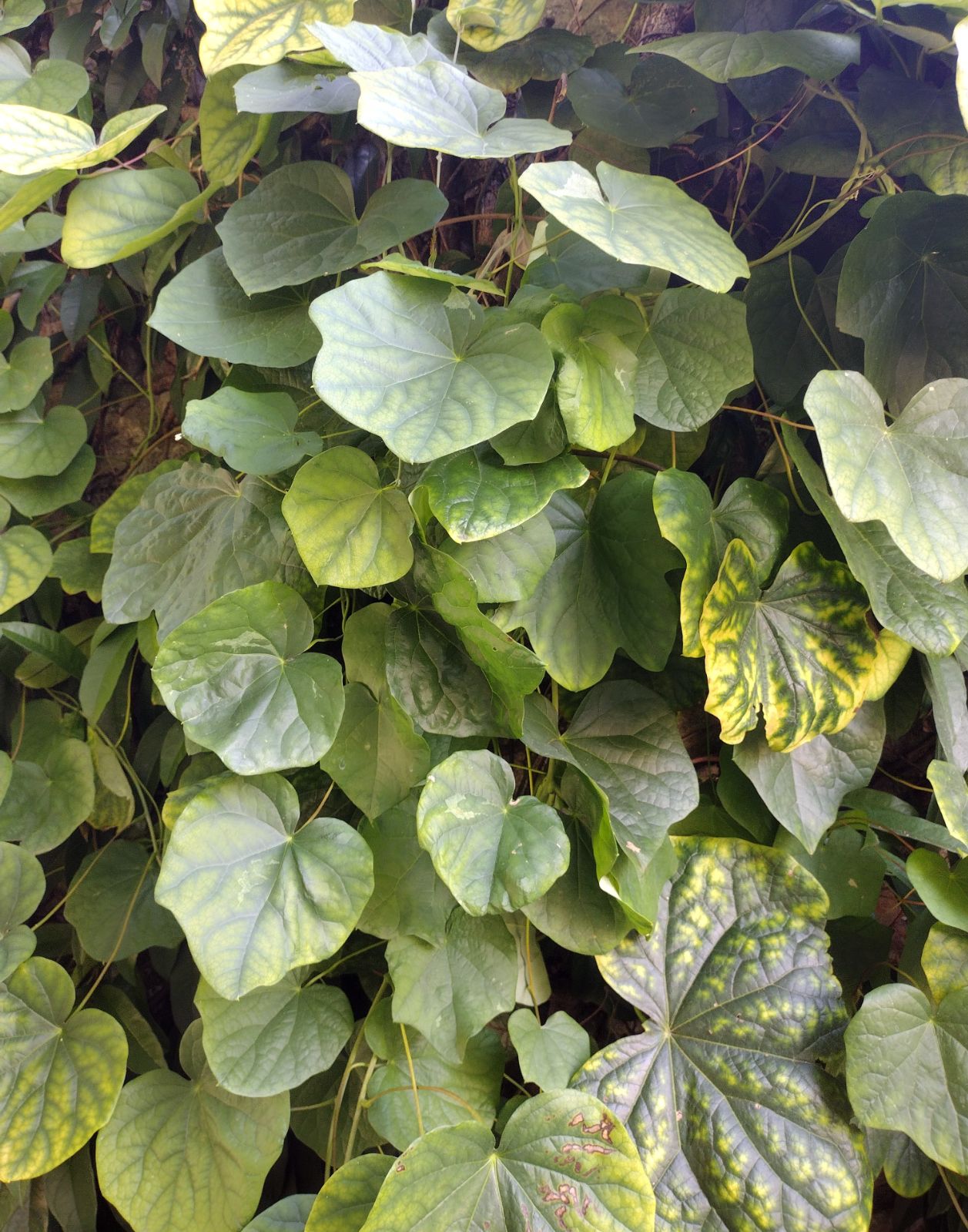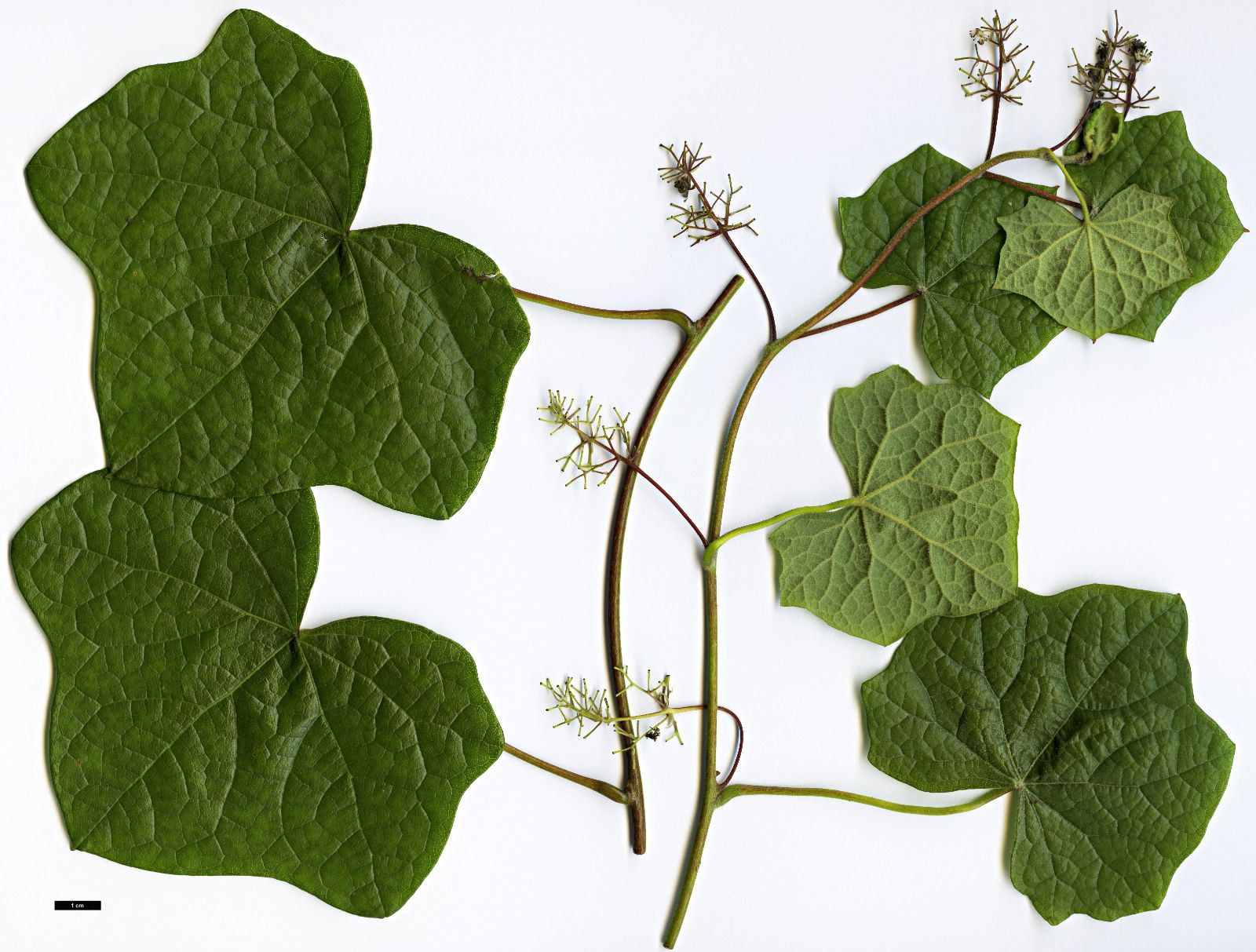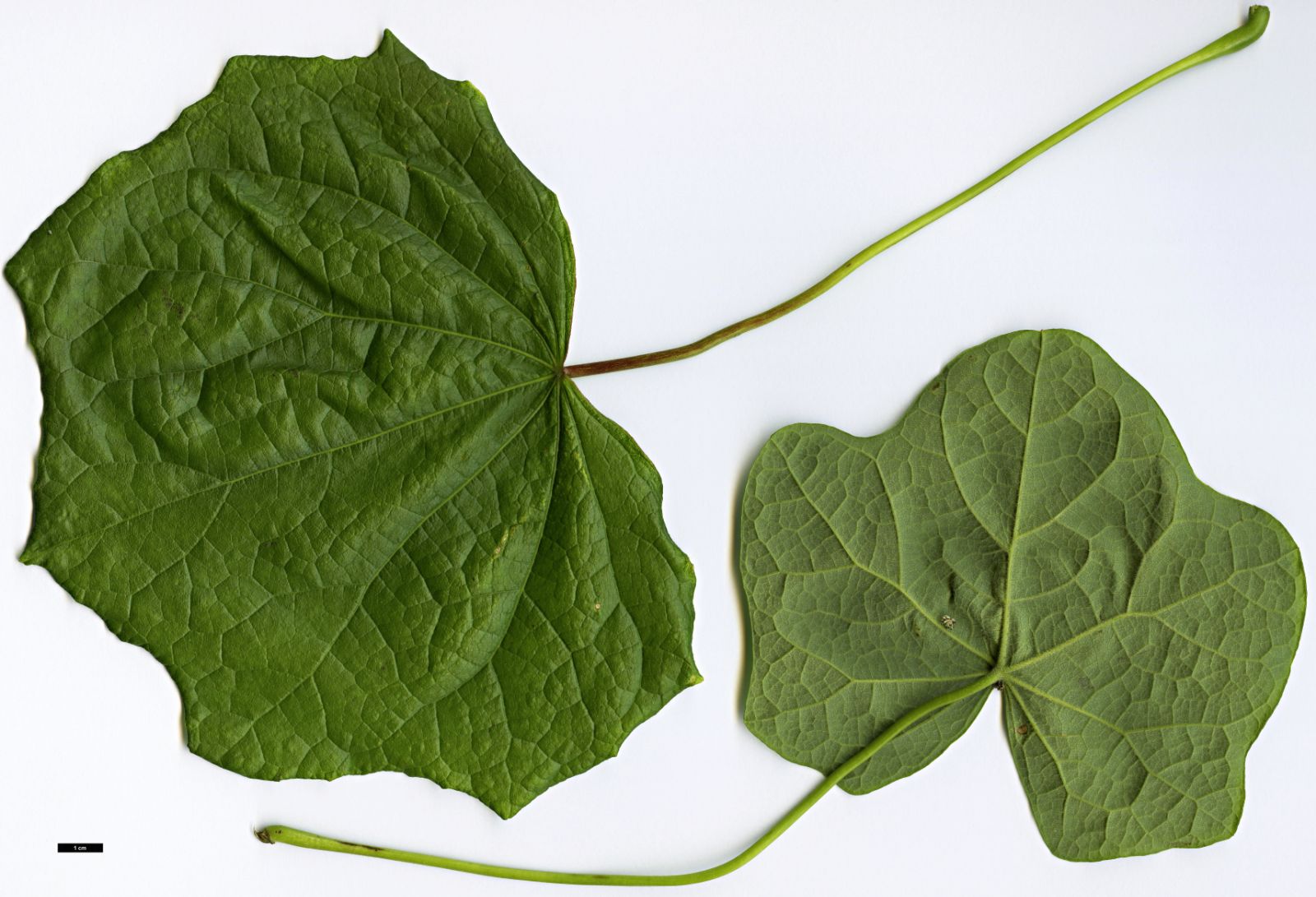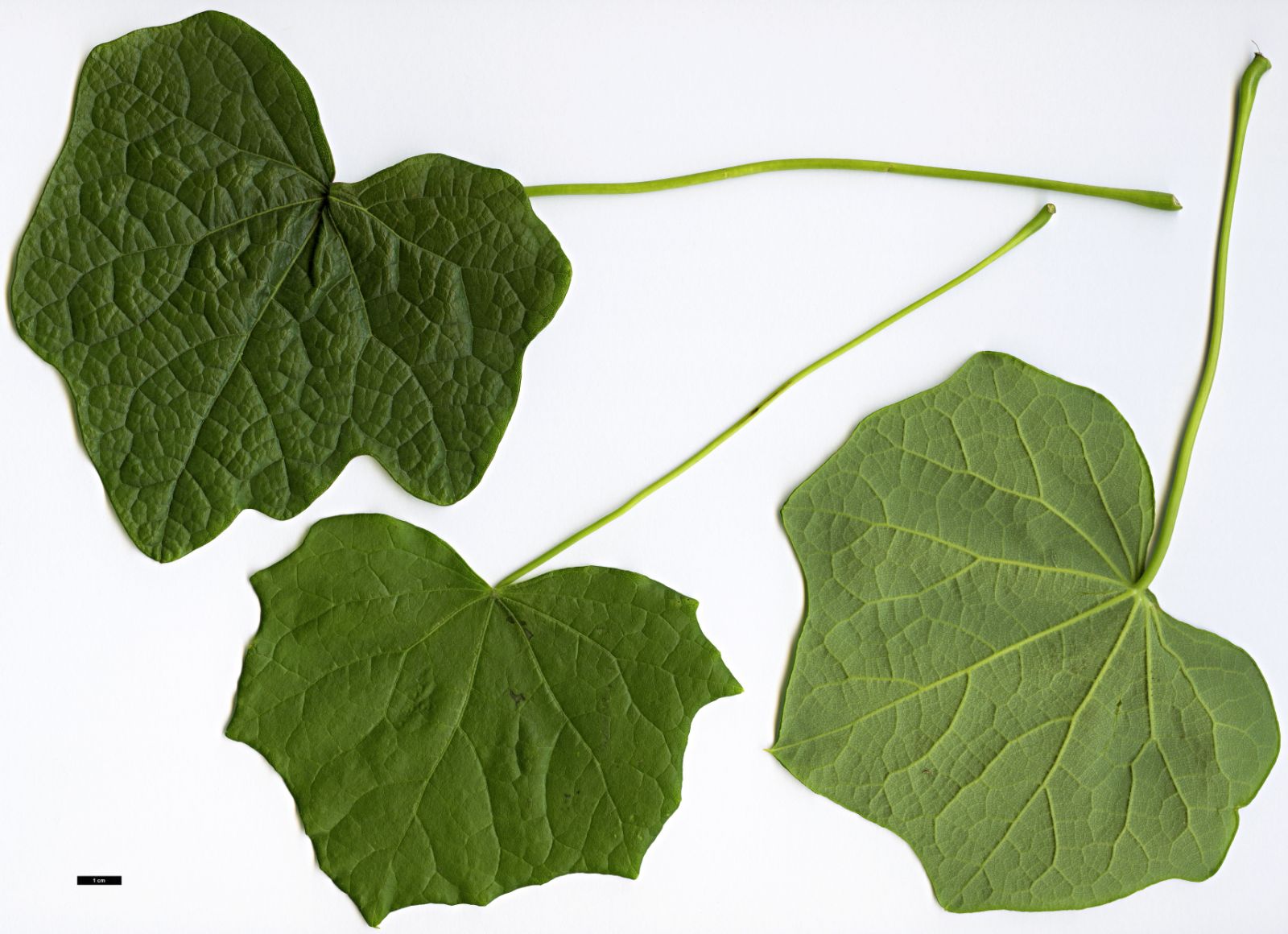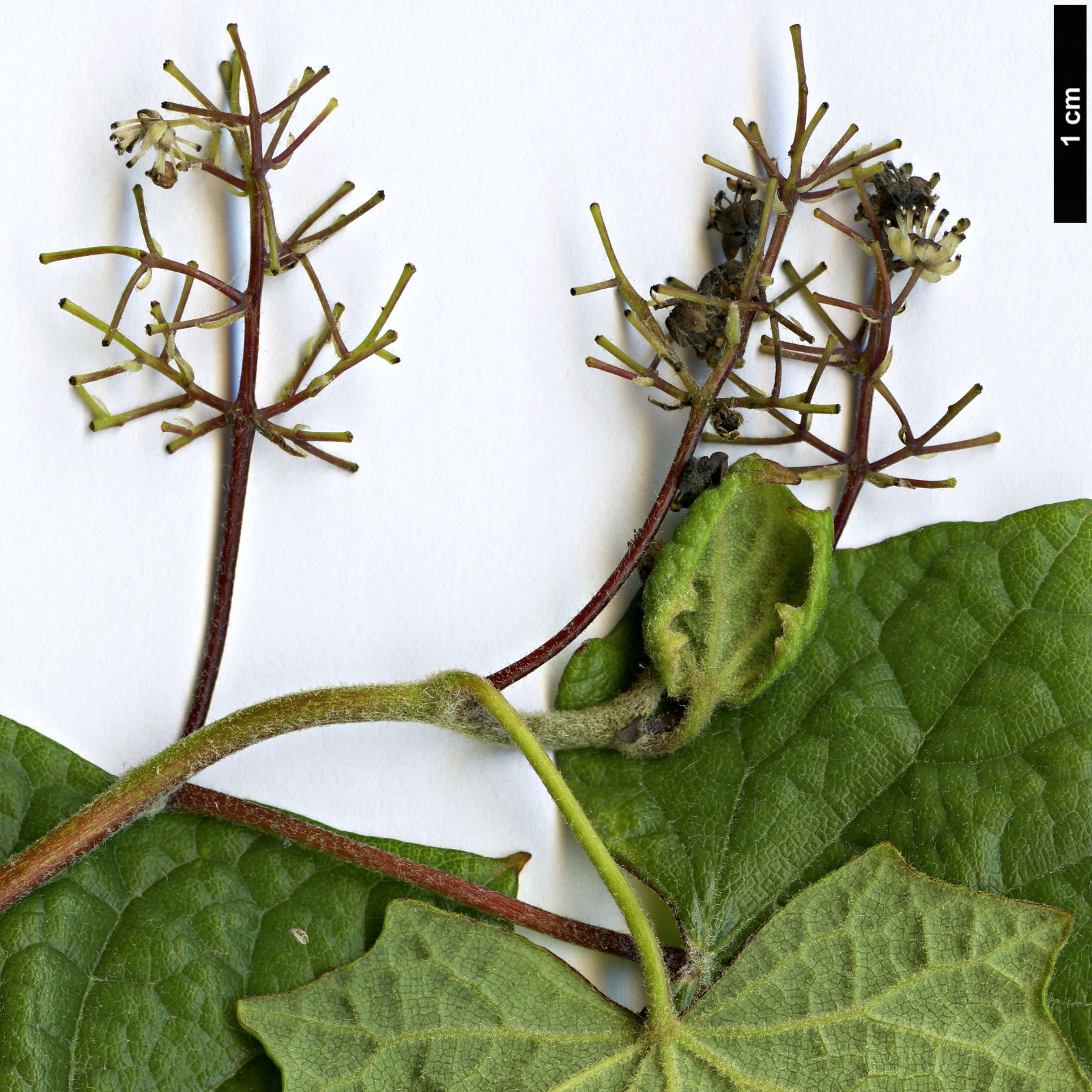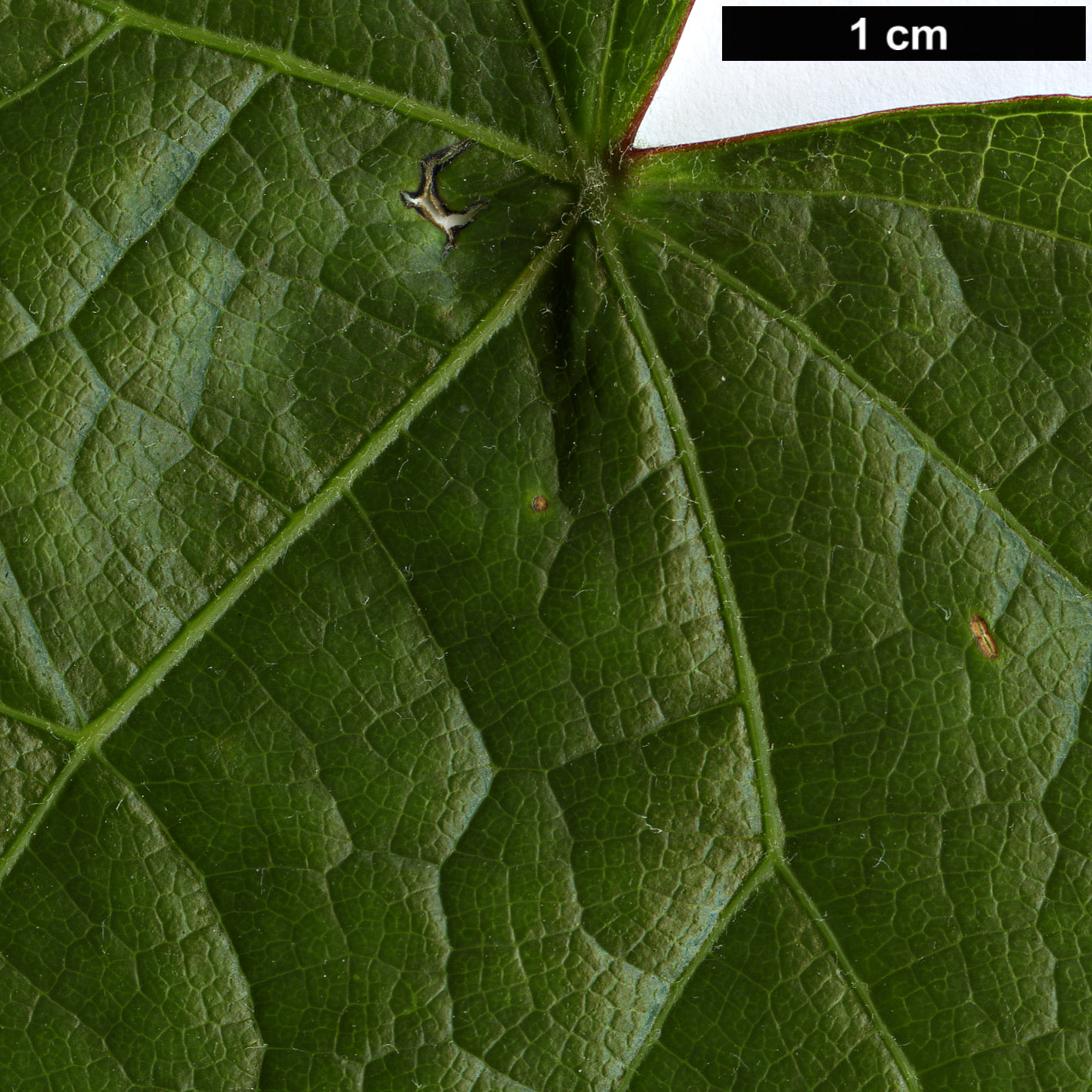Menispermum canadense
Credits
Article from Bean's Trees and Shrubs Hardy in the British Isles
Recommended citation
'Menispermum canadense' from the website Trees and Shrubs Online (treesandshrubsonline.
Genus
Common Names
- Canada Moonseed
A deciduous climber, producing a dense tangle of slightly downy, slender, twining shoots 12 or 15 ft high. Leaves 4 to 7 in. wide, ovate to heart-shaped and roundish, with usually three, five, or seven angular lobes, strongly veined and pale beneath, dark green above; leaf-stalk slender, 3 to 4 in. long, attached to the blade near, but not at the base (peltate). Flowers numerous, inconspicuous, greenish yellow, borne on a slender, long-stalked raceme, one of which is produced a little above each leaf-axil. Fruits in long loose racemes, nearly black when mature, about the size of a black currant. Each fruit contains one crescent-shaped seed. Bot. Mag., t. 1910.
Native of eastern N. America, where it is widely spread; cultivated in England since the end of the 17th century. Its stems although truly woody have a herbaceous appearance, and do not live long. The exceptional vigour of the plant and its habit of spreading rapidly by means of underground suckers render it unsuitable for planting near delicate or slow-growing shrubs, which it is apt to smother, but it makes a good summer covering for a wall or summer-house, and is distinctly ornamental when in fruit. It can be pruned back to the ground every winter.

